You’ll want a swimming watch with pressure sensors and at least 10ATM water resistance for accurate depth measurement. Premium models like the Garmin Fenix 7 and Apple Watch Ultra 2 offer the most reliable depth tracking, measuring down to 50-100 meters with ±1 to ±5 meter accuracy. Entry-level options focus on basic swimming metrics without advanced depth features, while mid-range watches like the Garmin Swim 2 balance functionality and pricing. The specific features and technology behind these capabilities reveal important considerations for your swimming needs.
Top Swimming Watches With Built-In Depth Sensors
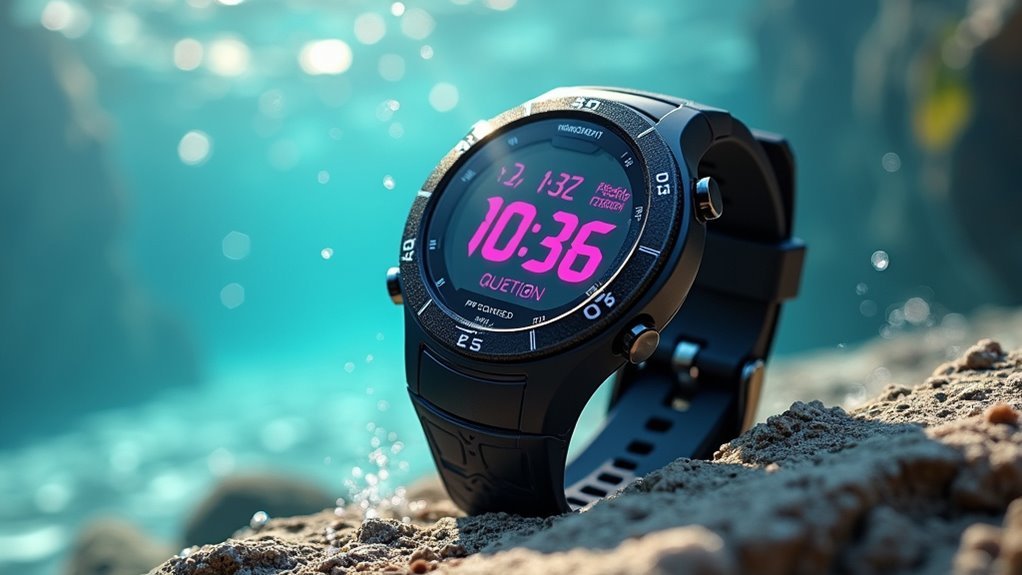
This limitation stems from several factors: increased cost and complexity, accuracy concerns in water environments, and relatively limited market demand for depth-specific functionality compared to general swimming watches. Most swimming watches prioritize waterproof ratings like 10ATM for surface water activities rather than incorporating dedicated depth measurement sensors.
Water Resistance Ratings and Maximum Depth Capabilities
When you’re choosing a swimming watch, you’ll need to understand ATM ratings, which measure the static water pressure your watch can handle—with 1 ATM equaling roughly 10 meters of water resistance.
Your watch’s maximum depth capability depends on whether you’re swimming laps in a pool or exploring underwater with scuba gear, as different activities require different minimum water resistance levels.
You should know that a watch rated for swimming isn’t automatically suitable for deeper underwater activities, since these represent distinct use cases with separate safety requirements. Professional diving watches require helium escape valves to prevent damage from gas build-up during ascent from extreme depths.
ATM Rating Explained
Understanding your watch’s ATM rating becomes essential when you’re selecting a timepiece for aquatic activities. ATM stands for “atmosphere” and measures the static pressure your watch can withstand underwater without leaking.
Each ATM equals 10 meters of water depth, but you shouldn’t rely on this conversion for actual diving depths.
You’ll find ratings from 1 ATM (minimal splash protection) to 100 ATM for professional diving. A 3 ATM watch handles everyday wear and brief immersions, while 5 ATM allows shallow swimming. For snorkeling, you’ll need 10 ATM minimum. The modern standard for serious scuba diving requires 20 ATM (200 meters) water resistance.
Remember that dynamic pressure from swimming movements, temperature changes, and your watch’s age can affect real-world water resistance beyond the static rating.
Maximum Depth Limits
Water resistance ratings tell only part of the story when you’re choosing a swimming watch.
While a 50-meter rating might seem adequate, manufacturers actually advise against swimming with these watches due to dynamic pressure from arm movements, which can effectively add 5 meters to the pressure your watch experiences.
For reliable swimming use, you’ll need at least 100-meter water resistance.
However, even these watches aren’t designed for accurate depth measurement beyond 10-20 meters below the surface. Most consumer swimming watches focus on tracking laps, strokes, and distance rather than maximum depth.
If you need serious depth measurement, look for ISO 6425 certified dive watches, which are tested to 25% beyond their rated depth and designed for actual underwater exploration. For extreme conditions and deep-sea exploration, watches with 20 bars or higher ratings provide the reliability required for technical diving situations.
Dive Vs Swim
Although many swimmers assume any water-resistant watch will work for their needs, the distinction between dive and swim ratings can make or break your underwater experience.
Swimming typically requires 100m/10ATM water resistance for pool use and beach activities, while diving demands higher ratings of 200m/20ATM or more.
Don’t be fooled by basic ratings – 30m/3ATM only handles hand washing and rain, while 50m/5ATM allows light swimming and showering.
For serious diving, you’ll need ISO 6425 certification, not just high water resistance numbers.
These ratings reflect static pressure under controlled conditions, not real-world scenarios with temperature changes and extended submersion.
Your watch’s rubber gaskets degrade from saltwater and chlorine exposure, requiring regular pressure testing and maintenance to maintain protection. Professional servicing should include gasket changes approximately every 18 months to ensure your timepiece maintains its water resistance capabilities.
Depth Tracking Accuracy and Measurement Technology
When you’re choosing a swimming watch, you’ll encounter different sensor technologies that directly impact how accurately your device measures depth underwater.
Most watches rely on pressure sensors and barometric technology to calculate water depth, while advanced models incorporate accelerometers and sophisticated algorithms to enhance measurement precision. Look for devices with a 5ATM rating for safe submersion during your swimming activities.
Understanding these sensor types and their precision standards will help you select a watch that meets your specific swimming and diving needs.
Sensor Technology Types
Swimming watches employ different sensor technologies to track your underwater movement, with each type offering distinct advantages for depth measurement and swim analysis.
Accelerometer-based wearables excel at detecting swim strokes, laps, and breathing patterns but can’t directly measure depth. When combined with gyroscopes and magnetometers, they’ll improve stroke analysis and navigation without adding depth capabilities.
Pressure sensors represent the gold standard for depth tracking, using water pressure changes to calculate vertical distance accurately. You’ll find these primarily in specialty dive watches and freediving computers rather than standard swim watches.
Ultrasonic technology offers exceptional depth accuracy but remains too complex for wearable devices.
Most consumer swim watches use multisensor integration, combining accelerometers with other sensors. However, they’ll only provide true depth measurement if they include pressure sensors alongside their performance tracking capabilities. In-ear sensors offer unique advantages by providing water protection while maintaining accurate measurement capabilities for swimming applications.
Measurement Precision Standards
Most swimming watches with depth tracking capabilities offer accuracy within ±1 to ±5 meters, though this precision varies considerably based on sensor quality and calibration standards. High-end models with digital pressure sensors typically deliver more reliable measurements than analog-only alternatives.
| Feature | Benefit |
|---|---|
| Factory calibration | Converts water pressure to depth using established algorithms |
| Manual calibration | Allows atmospheric pressure offset adjustments for varying conditions |
| Digital pressure sensors | Provides consistent, real-time depth data with sub-meter potential |
| Regular service intervals | Maintains accuracy as sensor drift occurs with temperature changes |
You’ll find that measurement errors increase during rapid pressure changes or excessive underwater movement. While ISO 6425 standards regulate water resistance testing, they don’t address electronic depth measurement accuracy, leaving most recreational watches reliant on manufacturer specifications rather than third-party certification. Watch manufacturers test water resistance under static pressure conditions for brief periods, which differs significantly from the dynamic pressures experienced during actual swimming activities.
Advanced Features for Deep Water Swimming and Diving
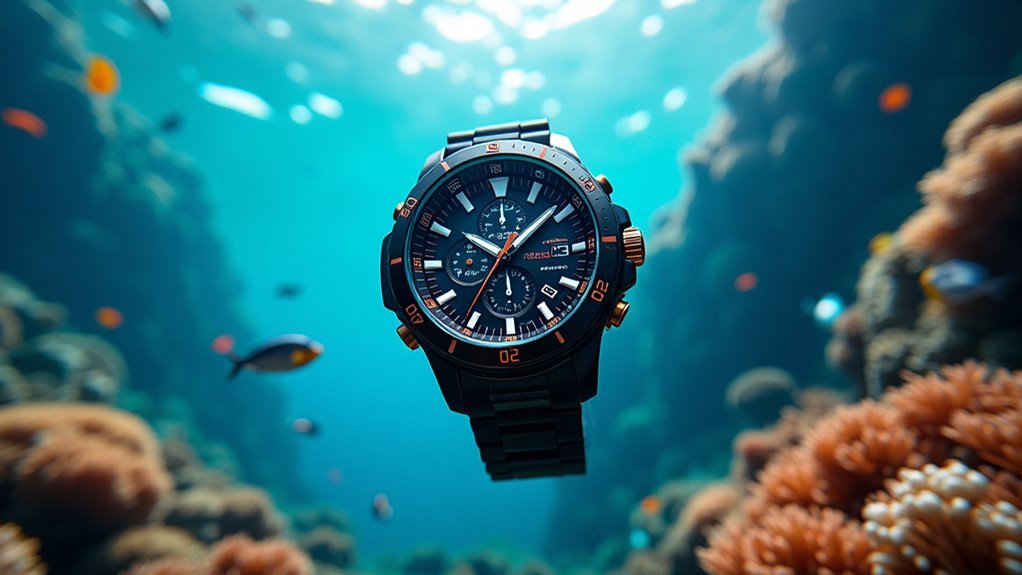
Beyond basic swim tracking, serious deep water swimmers and divers require watches equipped with advanced depth sensors, pressure resistance, and specialized safety features.
You’ll find top models measuring depths down to 50-100 meters with real-time updates, perfect for freediving and scuba applications. These watches feature reinforced materials, anti-corrosion properties, and true 100m+ water resistance ratings that exceed standard swim watches.
You’ll benefit from thorough biometric monitoring including heart rate, blood oxygen, and skin temperature tracking. However, optical heart rate sensors can experience 10-25% accuracy errors underwater due to water interference and light distortion.
Safety becomes paramount with audible alerts for rapid ascent, hazard warnings when approaching maximum depths, and emergency protocols.
Advanced models offer Nitrox compatibility and decompression algorithms for technical diving, while GPS integration ensures accurate open-water navigation and return route guidance when you’re swimming off course.
Battery Performance During Extended Depth Monitoring
When you’re planning extended deep water sessions, battery performance becomes a critical factor that can make or break your swimming or diving experience.
You’ll typically get 3-7 days of normal usage, but continuous depth monitoring with GPS can slash that to under 36 hours. Your watch’s battery drains over 50% faster when depth sensors work alongside GPS tracking during long swims.
Here’s what you can expect during extended depth monitoring:
- Power drain acceleration – Your battery depletes 25-40% faster than manufacturer claims when running full depth and GPS tracking.
- Session limitations – Open-water swimming with continuous monitoring cuts runtime considerably compared to pool sessions. Pool swimming typically requires less power since GPS functionality isn’t needed for indoor tracking.
- Performance variation – Swim-specific watches like Garmin Swim 2 maintain better consistency than general smartwatches.
- Alert management – Low battery warnings help you adjust tracking features before underwater shutdowns.
Comparing Price Points for Depth-Enabled Swimming Watches
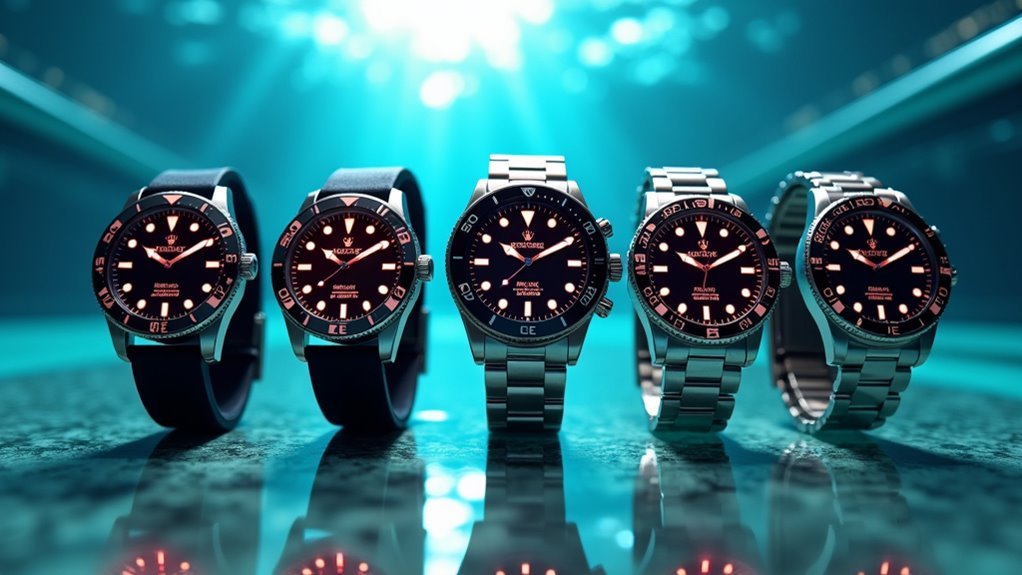
Three distinct price tiers define the depth-enabled swimming watch market, each offering different value propositions for swimmers seeking underwater tracking capabilities.
Entry-level options provide basic swimming metrics like pace and distance but typically lack advanced depth measurement features. You’ll find these watches at lower price points, perfect for casual swimmers who don’t need extensive tracking.
Mid-range watches offer balanced functionality and pricing. The Garmin Swim 2 at $249.99 exemplifies excellent value, delivering swim-focused features without multi-sport capabilities that you mightn’t use.
Premium options like the Garmin Fenix 7 and Apple Watch Ultra 2 command higher prices but provide thorough tracking including precise depth measurement, heart rate monitoring, and multi-sport functionality. The Apple Watch Ultra 2 features a 10 ATM rating with diving certification for serious underwater activities.
You’re paying for advanced sensors and durability that serious athletes demand.
Frequently Asked Questions
Can Swimming Watches With Depth Sensors Be Used in Saltwater Pools?
You can use swimming watches with depth sensors in saltwater pools, but you’ll need proper maintenance. Clean your watch thoroughly with fresh water afterward to prevent salt buildup and corrosion damage.
Do Depth Measurement Features Work Accurately in Shallow Kiddie Pools?
Your watch’s depth sensors won’t work accurately in shallow kiddie pools under one meter deep. The pressure changes are too minimal for reliable readings, and most devices ignore such shallow immersion entirely.
Will Depth Sensors Interfere With Pacemaker or Other Medical Devices?
You shouldn’t experience interference from depth sensors since they’re typically low-field pressure-based devices. However, you should consult your cardiologist before using any swimming watch to guarantee it’s safe for your specific medical device.
Can I Calibrate Depth Measurements for Different Altitudes Above Sea Level?
You can’t directly calibrate depth sensors for altitude in most swimming watches. You’ll need specialized dive computers with manual altitude adjustment features, as standard swimming watches lack coordinated depth-altitude calibration systems.
Do Swimming Watches Store Depth Data When Swimming in Airplane Mode?
Yes, you’ll still store depth data in airplane mode since depth tracking uses internal sensors, not connectivity. Your watch logs dives locally, then syncs the data when you reconnect later.
In Summary
You’ll find that investing in a depth-enabled swimming watch transforms your aquatic activities. Whether you’re pool training or open water diving, these devices provide essential safety data and performance metrics you can’t get elsewhere. Don’t compromise on water resistance ratings or accuracy when selecting your watch. Consider your specific depth requirements, battery needs, and budget constraints. The right depth-tracking watch becomes an indispensable tool for serious swimmers and divers.

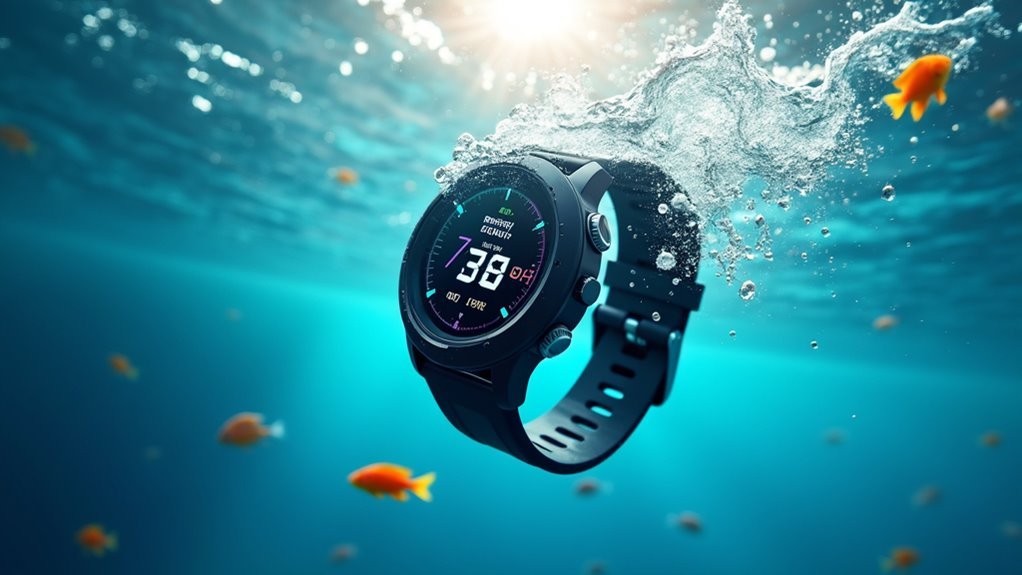

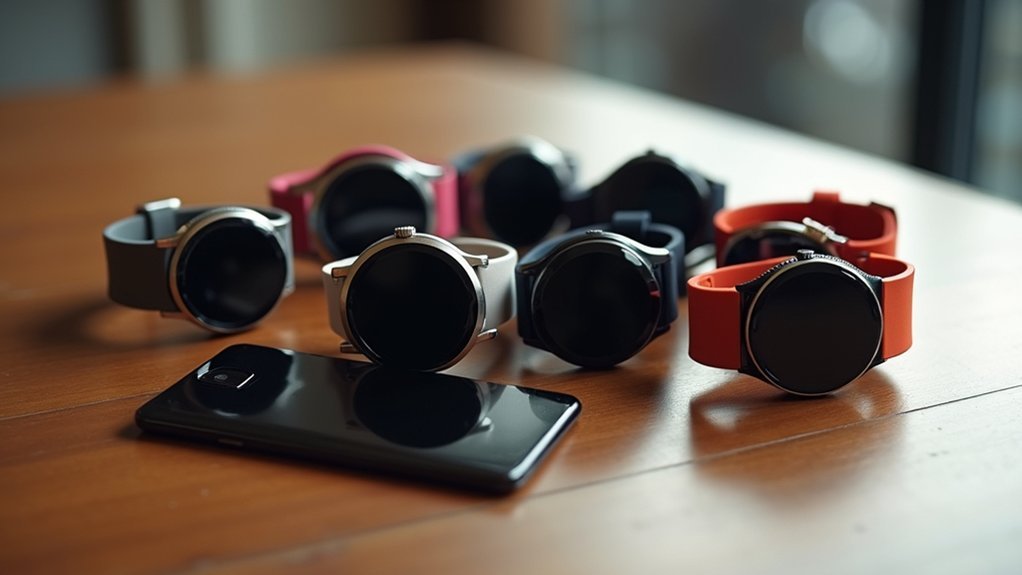
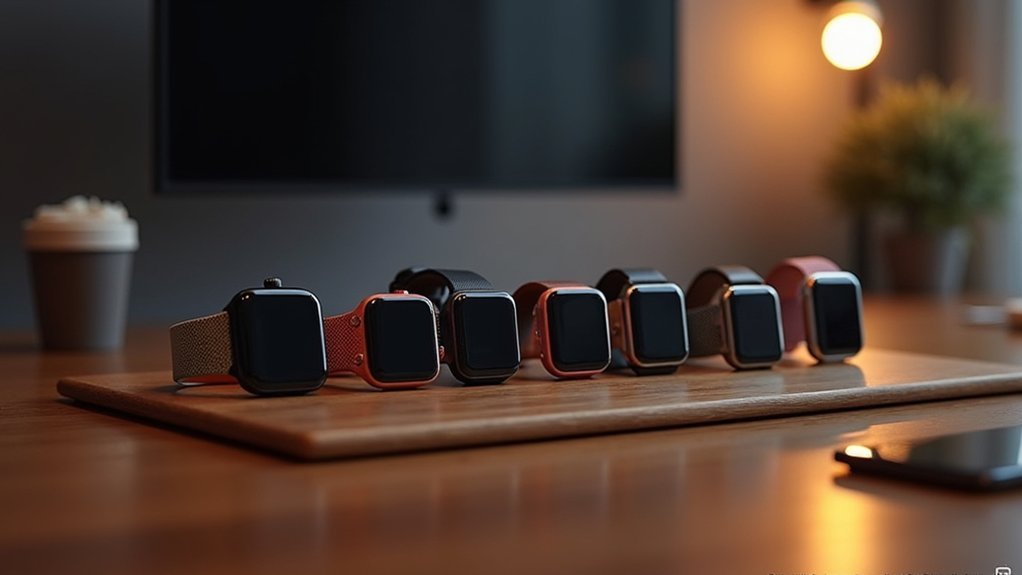
Leave a Reply